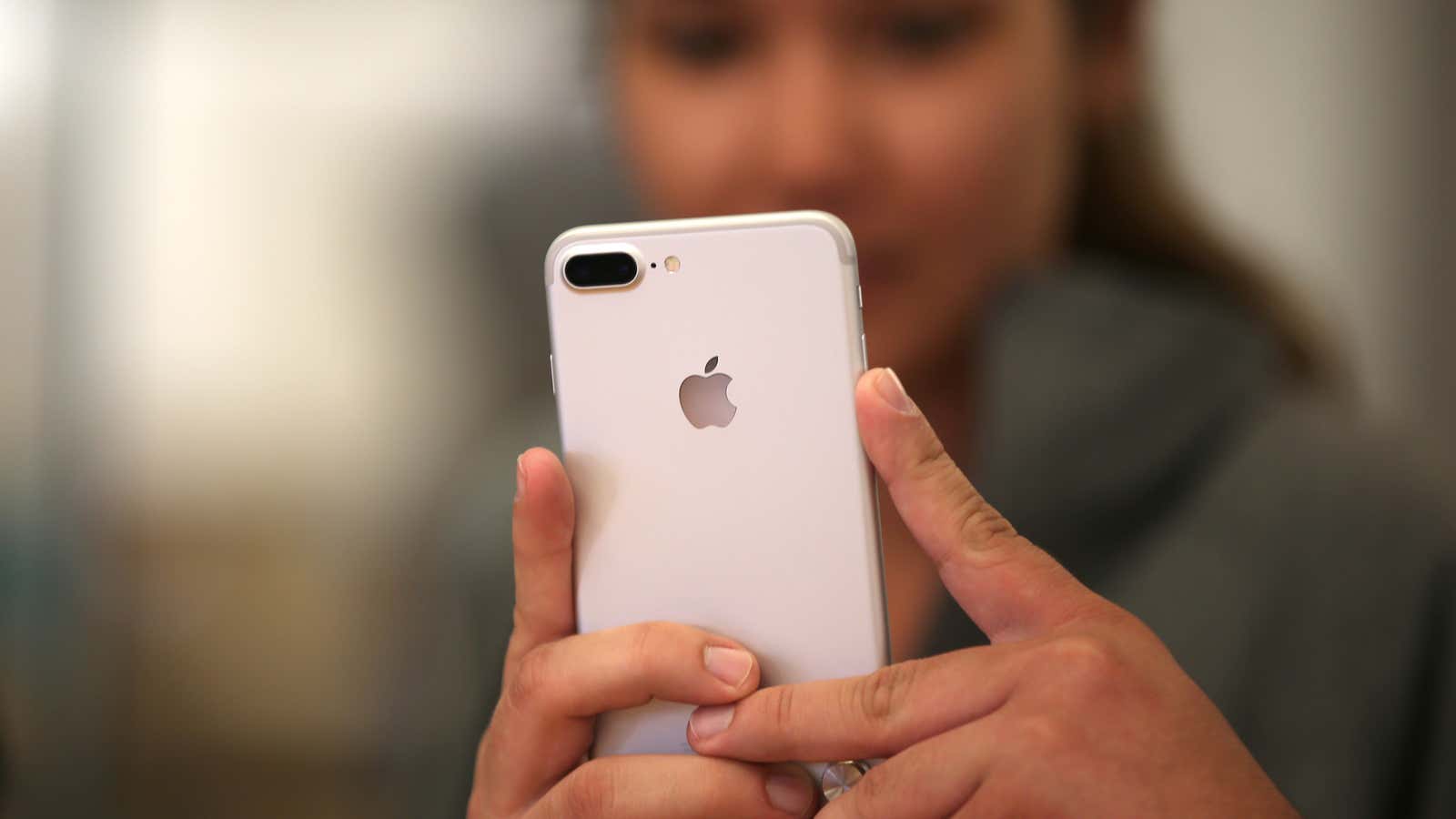“Designed in California,” and soon to be made there as well?
Apple has asked two of its major product assemblers, Foxconn and Pegatron, to explore the possibility of manufacturing future iPhones in the US, Nikkei reported Thursday, Nov. 17 (Friday morning in Japan).
The report suggests that Apple has asked both companies to look into how feasible it would be to produce the number of iPhones they currently do—roughly 200 million a year—in the US rather than Asia. Pegatron turned down the request, citing concerns around how much it would cost, while Foxconn looked into it, according Nikkei. ”Making iPhones in the U.S. means the cost will more than double,” the unnamed source told Nikkei. Apple wasn’t immediately available to comment on the report.
Apple’s impetus for potentially moving production of its most popular product to the US is reportedly due to concerns that president-elect Donald Trump may attempt to force the company to produce at least part of the iPhone domestically. Trump criticized Apple multiple times during his campaign, including its stance on refusing the FBI’s demand to unlock the San Bernardino shooter’s phone, and suggesting that the company should build the iPhone in the US.
Production costs would likely skyrocket were Apple to build its next generations of the iPhone in the US, but it wouldn’t really be because labor would cost so much more there. One of the benefits of Western companies manufacturing goods in Asia is that labor costs are indeed far lower than what they are at home. But as Jason Dedrick, a professor at the School of Information Studies at Syracuse University, told The Wall Street Journal, if Apple could find enough workers in one place to assemble massive amounts of iPhones in the US, the cost per iPhone would likely increase by about $30 or $40 (a new iPhone starts at $649 in the US), and only a small part of that would be due to labor.
The real issue is that the vast majority of Apple’s suppliers, the companies that build the individual components that make up an iPhone—such as the battery, the camera, the display, the sensors, and just about every other part inside the iPhone—are based in Asia.
Apple has suppliers in 28 countries, and the countries with the highest concentration of suppliers are China, Japan, the US, and Taiwan, according to MIT Technology Review. Shipping all of those individual parts to the US would cost a lot more than moving them around China or shipping them across Asia.
Dedrick estimated for The Wall Street Journal that making all the iPhone components in the US could see the cost of an iPhone rise by $90. And that’s assuming Apple would be able to source all of the same components in the US. Apple has been working with manufacturers and suppliers for decades, and almost 10 years on the iPhone alone, and replacing those relationships would not necessarily be easy. The company also uses manufacturers like Foxconn to help prototype products, so the research and development costs of finding new partners (or doing more work in-house) would also likely increase.
